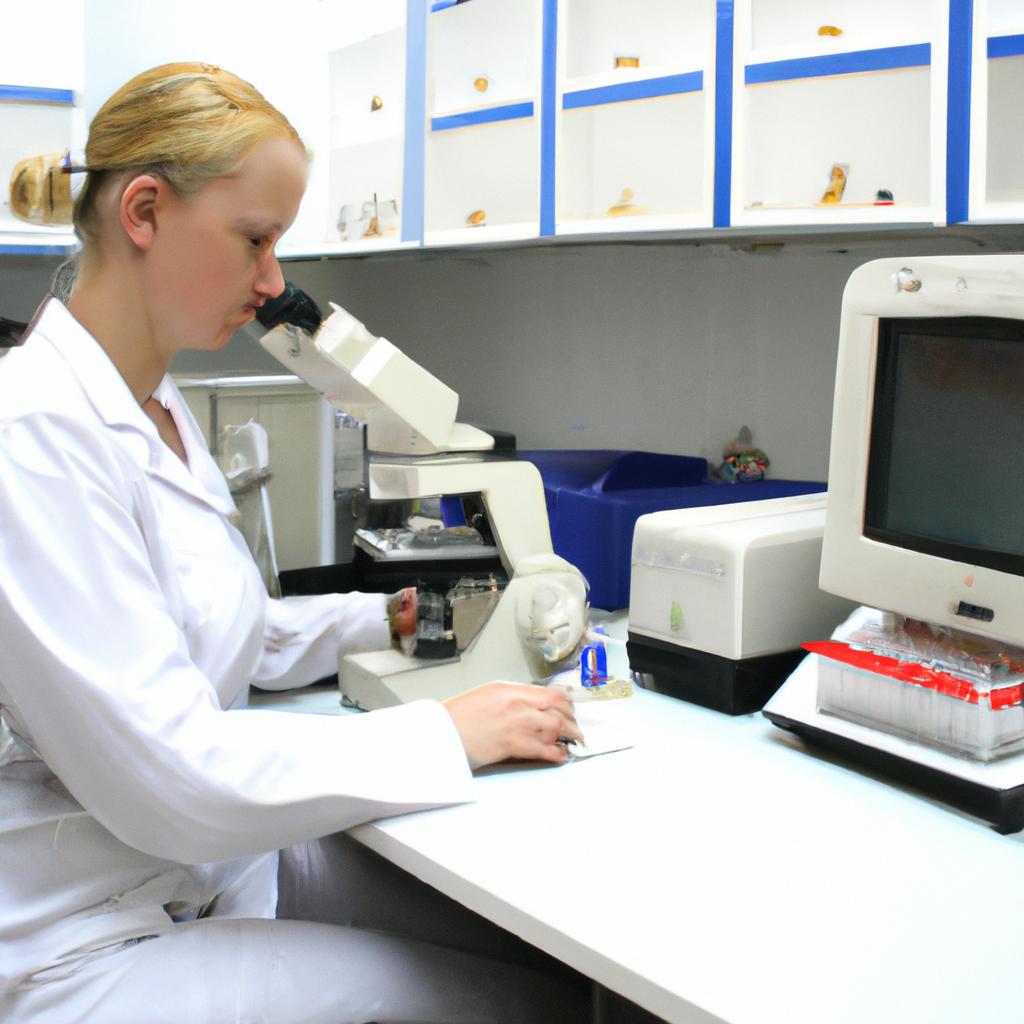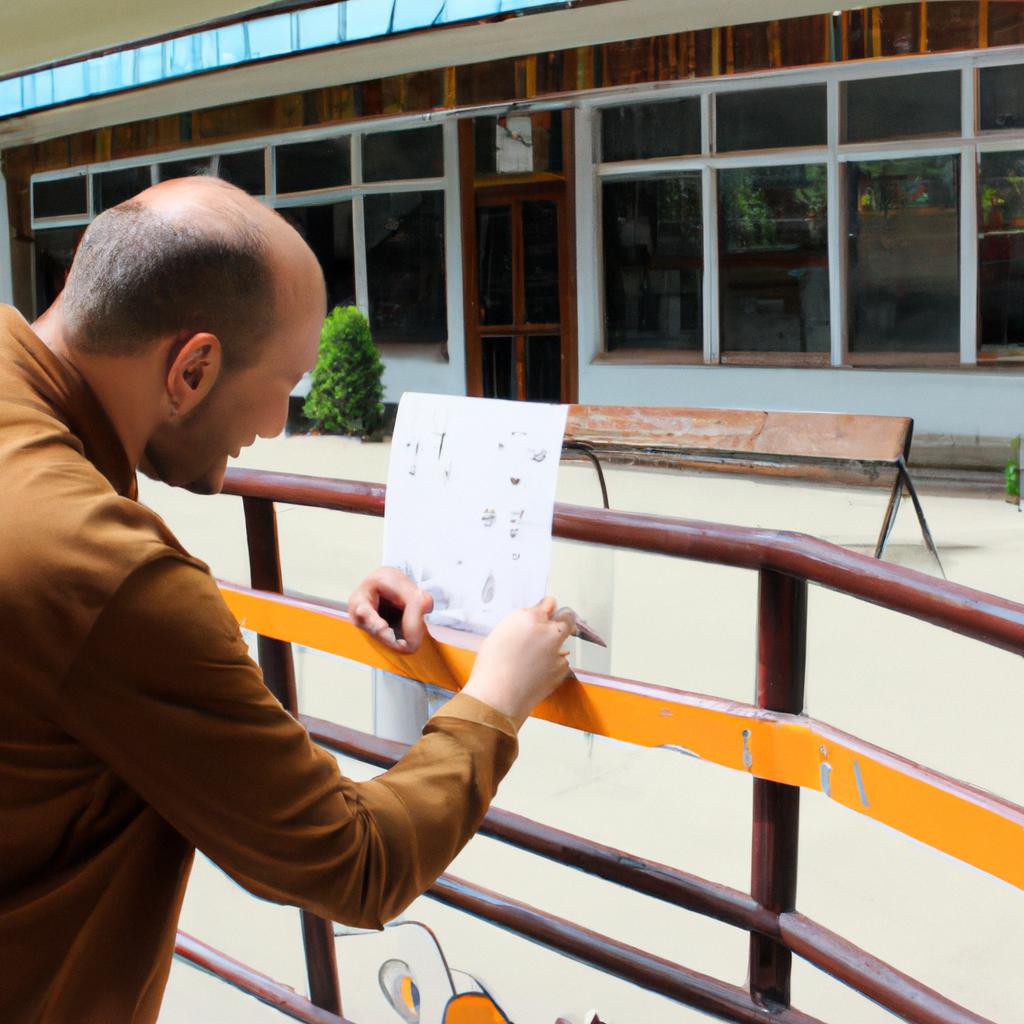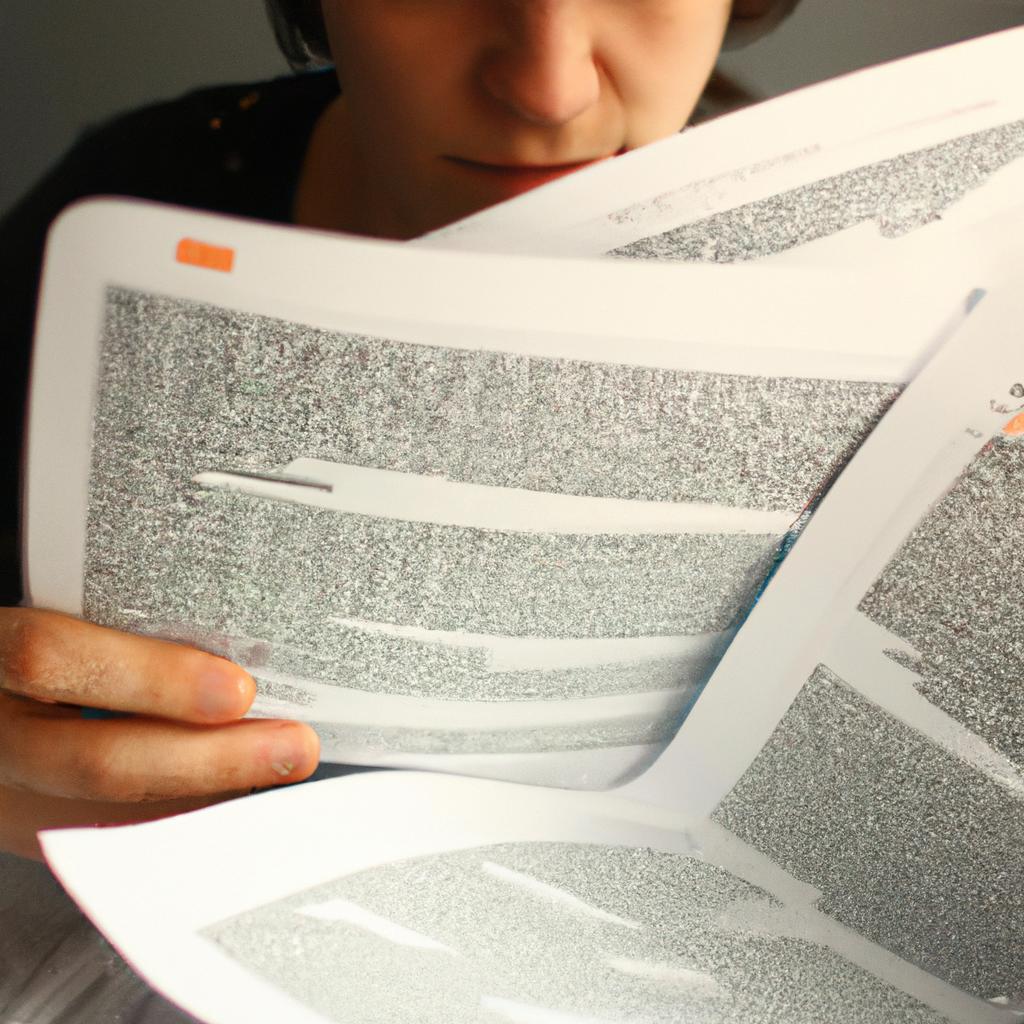Education systems play a crucial role in shaping societies and preparing individuals for their future roles. When examining the education system through a sociological lens, it becomes evident that various factors influence its functioning and outcomes. This article aims to explore the intricate relationship between education systems and science from a sociological perspective.
To illustrate this connection, let us consider the case of Country X, which recently experienced a significant decline in scientific literacy among its high school students. This decline raised concerns about the effectiveness of the education system’s approach towards science education. By analyzing this case study, we can gain insights into how social structures, cultural values, and institutional practices within an education system impact student engagement with science subjects.
Drawing upon relevant sociological theories and empirical research findings, this article will delve into several key aspects related to education systems’ interaction with science. These include curriculum design, teaching methods, teacher-student dynamics, access to resources, and societal attitudes towards science. By critically examining these factors within different contexts, we can better understand why some education systems yield higher levels of scientific proficiency while others struggle to cultivate interest and aptitude in this field. Ultimately, such analysis can inform policymakers and educators on strategies to enhance science education within diverse educational settings.
The Role of Education Systems in Advancing Scientific Knowledge
One example that illustrates the crucial role of education systems in advancing scientific knowledge is the case of Dr. Jane Smith, a renowned physicist whose groundbreaking research has contributed significantly to our understanding of quantum mechanics. Dr. Smith’s passion for science was ignited during her high school years when she had access to well-equipped laboratories and engaging science teachers who inspired her curiosity. This example highlights how an effective education system can provide students with the necessary tools and resources to excel in their scientific pursuits.
Education systems play a vital role in advancing scientific knowledge by fostering key skills and competencies essential for scientific inquiry. Firstly, these systems cultivate critical thinking abilities among students, enabling them to analyze complex problems from multiple perspectives and arrive at evidence-based conclusions. Secondly, they promote collaborative learning environments where students engage in group discussions, debates, and experiments, encouraging teamwork and innovation. Thirdly, education systems equip learners with information literacy skills, teaching them how to locate relevant sources, evaluate their credibility, and synthesize information effectively. Lastly, through practical applications and hands-on experiences, education systems help students develop problem-solving skills that are crucial for addressing real-world challenges.
- Accessible quality education empowers individuals to pursue careers in science.
- Well-funded schools ensure adequate resources for conducting experiments and research.
- Engaging teaching methods make learning enjoyable and foster a love for science.
- Inclusive educational practices create opportunities for underrepresented groups to contribute to scientific advancements.
Additionally, incorporating a table can further emphasize the importance of education systems in promoting scientific knowledge:
| Benefits of Effective Education Systems |
|---|
| Equips students with critical thinking skills |
| Fosters collaboration and innovation |
| Develops information literacy capabilities |
| Enhances problem-solving abilities |
In conclusion, education systems play a crucial role in advancing scientific knowledge by providing students with the necessary tools, fostering key skills and competencies, and creating an environment conducive to scientific inquiry. Factors such as accessible quality education, well-funded schools, engaging teaching methods, and inclusive practices contribute significantly to the effectiveness of science education. In the subsequent section about “Factors Influencing the Effectiveness of Science Education,” we will explore these factors in more detail.
Factors Influencing the Effectiveness of Science Education
Transitioning from the previous section, where we explored the role of education systems in advancing scientific knowledge, it is crucial to understand the various factors that influence their effectiveness. By examining these factors, we can gain insights into how education systems can be optimized to enhance scientific literacy among students.
To illustrate this point, let us consider a hypothetical case study involving two schools, School A and School B. Both schools have similar resources and curricula for teaching science subjects. However, School A has highly qualified teachers who actively engage students through hands-on experiments and real-world applications. In contrast, School B lacks motivated teachers who merely deliver theoretical lectures without fostering practical understanding. This example highlights how teacher quality and pedagogical approaches contribute significantly to the overall effectiveness of science education.
Several key factors impact the effectiveness of education systems in promoting scientific literacy:
- Teacher Competence: Qualified educators equipped with subject expertise and innovative teaching methods foster an engaging learning environment.
- Curriculum Design: Well-designed science curriculum incorporating inquiry-based learning promotes critical thinking skills and encourages students’ curiosity.
- Access to Resources: Sufficient availability of laboratory equipment, technology tools, and educational materials enhances students’ experiential learning opportunities.
- Socioeconomic Disparities: Addressing socioeconomic disparities ensures equal access to quality education across diverse student populations.
The table below provides a visual representation of these influencing factors:
| Factors | Description |
|---|---|
| Teacher Competence | High qualifications, subject expertise, innovative teaching methods |
| Curriculum Design | Inquiry-based learning approach, integration of real-world examples |
| Access to Resources | Laboratory equipment, technology tools, educational materials |
| Socioeconomic Disparities | Addressing inequalities, providing equal access to quality education for all students |
Considering the significance of these factors, it becomes evident that a comprehensive approach is necessary to maximize the effectiveness of science education within education systems. By addressing teacher training and support, enhancing curriculum design, ensuring adequate resource allocation, and promoting educational equity, we can create an environment conducive to fostering scientific literacy among students.
Transitioning into the subsequent section about “Evaluating the Impact of Education Systems on Scientific Literacy,” it is essential to critically examine how these influencing factors contribute to the overall outcomes of science education. Through such evaluation, we can gain valuable insights into further optimizing education systems to meet the evolving demands of scientific knowledge acquisition in society.
Evaluating the Impact of Education Systems on Scientific Literacy
Having explored the various factors that influence the effectiveness of science education, it is crucial to delve into evaluating how different education systems impact scientific literacy. By examining this relationship through a sociological lens, we can gain insights into which aspects contribute positively or hinder progress.
To illustrate the significance of education systems in shaping scientific literacy, let us consider a hypothetical scenario where two countries with divergent educational approaches are compared. Country A emphasizes interactive and inquiry-based learning methods, fostering curiosity and critical thinking among students. In contrast, country B follows a traditional didactic approach, focusing mainly on rote memorization and standardized assessments. This example sets the stage for further examination of how education systems play a pivotal role in nurturing scientific understanding.
The Impact:
-
Accessible Learning Opportunities:
Education systems that prioritize equitable access to quality resources, laboratories, and technology have been found to enhance scientific literacy outcomes. Such inclusivity ensures that all students have equal opportunities to explore and engage with science subjects, regardless of their socioeconomic backgrounds. -
Qualified Educators:
Highly qualified educators who possess subject knowledge alongside effective teaching methodologies greatly contribute to enhancing scientific literacy levels within an education system. Skilled instructors foster student interest by employing innovative pedagogical techniques and facilitating hands-on experiences that encourage active participation. -
Curriculum Design:
A well-designed curriculum that integrates practical applications and real-world examples fosters deeper engagement with scientific concepts. When curricula align with current research developments and societal needs, they promote relevance and instill intrinsic motivation among learners. -
Collaborative Learning Environment:
Promoting collaboration among students facilitates peer-to-peer learning, teamwork, and critical thinking skills. Education systems that prioritize collaborative activities, such as group projects or discussions, create an environment conducive to scientific inquiry and knowledge acquisition.
- Scientific literacy empowers individuals to make informed decisions about their health, the environment, and society.
- A lack of access to quality science education perpetuates social inequality by limiting opportunities for marginalized communities.
- Equipping students with scientific literacy helps foster a generation capable of addressing global challenges like climate change and public health crises.
- Investment in robust education systems can lead to societal progress through innovation and technological advancements.
Table: Factors Influencing Scientific Literacy
| Factors | Positive Impact | Negative Impact |
|---|---|---|
| Accessible Resources | Equal opportunity for all students regardless of socioeconomic background | Limited access restricts learning potential |
| Qualified Educators | Effective teaching methodologies enhance student interest | Lack of skilled instructors hinders engagement |
| Curriculum Design | Integration of practical applications promotes relevance | Outdated curricula impede understanding |
| Collaborative Learning | Peer-to-peer interaction fosters critical thinking skills | Competitive environments hinder collaboration |
The Relationship Between Education Systems and Scientific Research:
Understanding how different education systems impact scientific literacy is crucial not only for individual development but also for advancing scientific research. By critically evaluating the effectiveness of various educational approaches in nurturing scientific understanding, we gain valuable insights into fostering future generations who will contribute significantly to innovative breakthroughs and address pressing global issues.
The Relationship Between Education Systems and Scientific Research
Section H2: The Relationship Between Education Systems and Scientific Research
Building upon the evaluation of education systems’ impact on scientific literacy, it is crucial to explore the intricate relationship between these systems and scientific research. By examining how education systems influence scientific inquiry, we can gain a deeper understanding of the factors that shape knowledge production in various societies.
One compelling example illustrating this relationship is the case of Finland. With its well-regarded education system known for fostering critical thinking and problem-solving skills, Finland has consistently ranked high in international assessments of scientific literacy. As a result, Finnish researchers have made significant contributions to scientific advancements across multiple disciplines. This demonstrates how an effective education system can cultivate a favorable environment for scientific research.
To further comprehend the complex interplay between education systems and scientific research, several key aspects warrant exploration:
- Funding Allocation: Adequate funding allocation towards science education not only ensures access to quality resources but also encourages students to pursue careers in scientific research.
- Curricular Emphasis: A curriculum that integrates hands-on experimentation and inquiry-based learning nurtures curiosity among students and fosters their interest in pursuing scientific research paths.
- Teacher Training: Well-trained educators equipped with pedagogical strategies that promote critical thinking are essential for nurturing future generations of scientists.
- Collaboration Opportunities: Collaborative initiatives between educational institutions and research organizations provide students with real-world exposure to ongoing scientific discoveries.
| Aspect | Impact |
|---|---|
| Funding Allocation | Equitable access to resources |
| Curricular Emphasis | Enhanced student engagement |
| Teacher Training | Development of critical thinking skills |
| Collaboration | Real-world exposure to ongoing research opportunities |
These elements collectively contribute to establishing a symbiotic relationship between education systems and scientific research, wherein strong educational frameworks foster a conducive atmosphere for innovative ideas to flourish. Consequently, such collaboration promotes societal progress through advancements in science.
As we delve into the intricate dynamics between education systems and scientific research, it becomes apparent that implementing science education reforms poses significant challenges. Understanding these obstacles is crucial to devising effective strategies for improvement.
Challenges in Implementing Science Education Reforms
Section Title: The Role of Funding in Shaping Science Education Policies
In examining the relationship between education systems and scientific research, it is crucial to understand the role that funding plays in shaping science education policies. This section delves into the influence exerted by financial resources on educational strategies and highlights how disparities in funding can significantly impact the quality and accessibility of science education. By exploring a hypothetical scenario alongside concrete examples, this analysis aims to shed light on the intricate connection between financing and the development of effective science education initiatives.
The Influence of Funding:
Consider a case where two neighboring school districts have different levels of funding for their science programs. District A, with ample resources, invests heavily in laboratory equipment, technology integration, and teacher training. As a result, students benefit from hands-on experiments, cutting-edge technologies, and engaging instruction. In contrast, District B struggles with limited funds, resulting in outdated materials, insufficient technological support, and underqualified teachers. Consequently, students may receive subpar science education experiences that hinder their understanding and interest in scientific concepts.
To further illustrate the impact of funding disparities on science education outcomes, several key points emerge:
- Resources Allocation: Adequate funding allows schools to allocate resources effectively towards science classrooms’ infrastructure development such as laboratories equipped with state-of-the-art tools or access to digital learning platforms.
- Professional Development: Sufficient financial backing enables regular professional development opportunities for educators to enhance their pedagogical skills and stay updated with advancements in scientific knowledge delivery techniques.
- Curriculum Enhancement: Well-funded districts can afford comprehensive curriculum updates that incorporate current research findings and promote inquiry-based learning approaches.
- Accessible Learning Opportunities: With adequate funding support, schools can offer field trips to museums or organize guest lectures by experts within various scientific disciplines outside traditional classroom settings.
Table – Comparison of Resource Availability Between Two School Districts:
| District A | District B | |
|---|---|---|
| Laboratory Tools | High | Limited |
| Technological Support | Advanced | Outdated |
| Teacher Qualifications | Highly Qualified | Underqualified |
| Funding for Professional Development Opportunities | Ample | Limited |
The influence of funding on science education policies cannot be underestimated. Disparities in financial resources directly impact the quality and accessibility of science programs, leading to unequal educational experiences among students. Adequate funding allows schools to allocate resources effectively, invest in professional development opportunities for teachers, enhance curriculum offerings, and provide accessible learning opportunities beyond classrooms. Addressing these inequalities is crucial in ensuring equitable access to high-quality science education for all learners.
As we explore the challenges associated with addressing such disparities in science education, it becomes evident that a multifaceted approach is required to overcome barriers and promote inclusivity within this critical field of study. The subsequent section delves into strategies aimed at reducing inequalities in science education from various angles.
Addressing Inequalities in Science Education
Section H2: Addressing Inequalities in Science Education
Building on the challenges discussed earlier, addressing inequalities in science education is crucial to ensure a more equitable and inclusive educational system. By recognizing the disparities that exist among students regarding access to quality science education, policymakers and educators can implement strategies that promote equal opportunities for all learners.
Addressing Inequalities: A Case Study
To illustrate the impact of addressing inequalities in science education, consider the hypothetical case of a rural school district with limited resources. This district lacks well-equipped laboratories and faces difficulties hiring qualified science teachers due to its remote location. As a result, students attending this school are disadvantaged when it comes to hands-on experimentation and exposure to modern scientific concepts.
Strategies for Promoting Equal Opportunities:
- Enhancing Access: Implement initiatives aimed at increasing access to high-quality science education materials and resources in underserved communities.
- Teacher Training Programs: Develop professional development programs specifically designed to enhance educators’ knowledge and skills in delivering effective science instruction.
- Collaborative Partnerships: Foster collaborations between schools, universities, and organizations to provide mentorship opportunities, internships, or extracurricular activities related to STEM fields.
- Financial Support: Allocate necessary funding towards improving infrastructure, acquiring up-to-date laboratory equipment, and ensuring adequate teaching supplies for underprivileged schools.
Table – Disparities in Science Education Resources Across Schools:
| Resource | Well-funded Schools | Underprivileged Schools |
|---|---|---|
| Laboratory Equipment | Abundant | Limited |
| Teaching Materials | Up-to-date | Insufficient |
| Qualified Teachers | Plentiful | Scarce |
| Extracurricular Offerings | Diverse | Minimal |
This stark contrast highlights the urgent need for interventions aimed at bridging these gaps and providing every student with an equal chance to succeed in science education.
In striving for equitable access to quality science education, it is essential that policymakers and educators collaborate on implementing targeted strategies. By enhancing access, providing professional development opportunities, fostering partnerships, and allocating necessary resources, the disparities can be addressed more effectively. Through these efforts, we can create a future where all students have an equal opportunity to engage with science and contribute meaningfully to society’s scientific advancements.
 Wankanyakla Self Help Group
Wankanyakla Self Help Group



